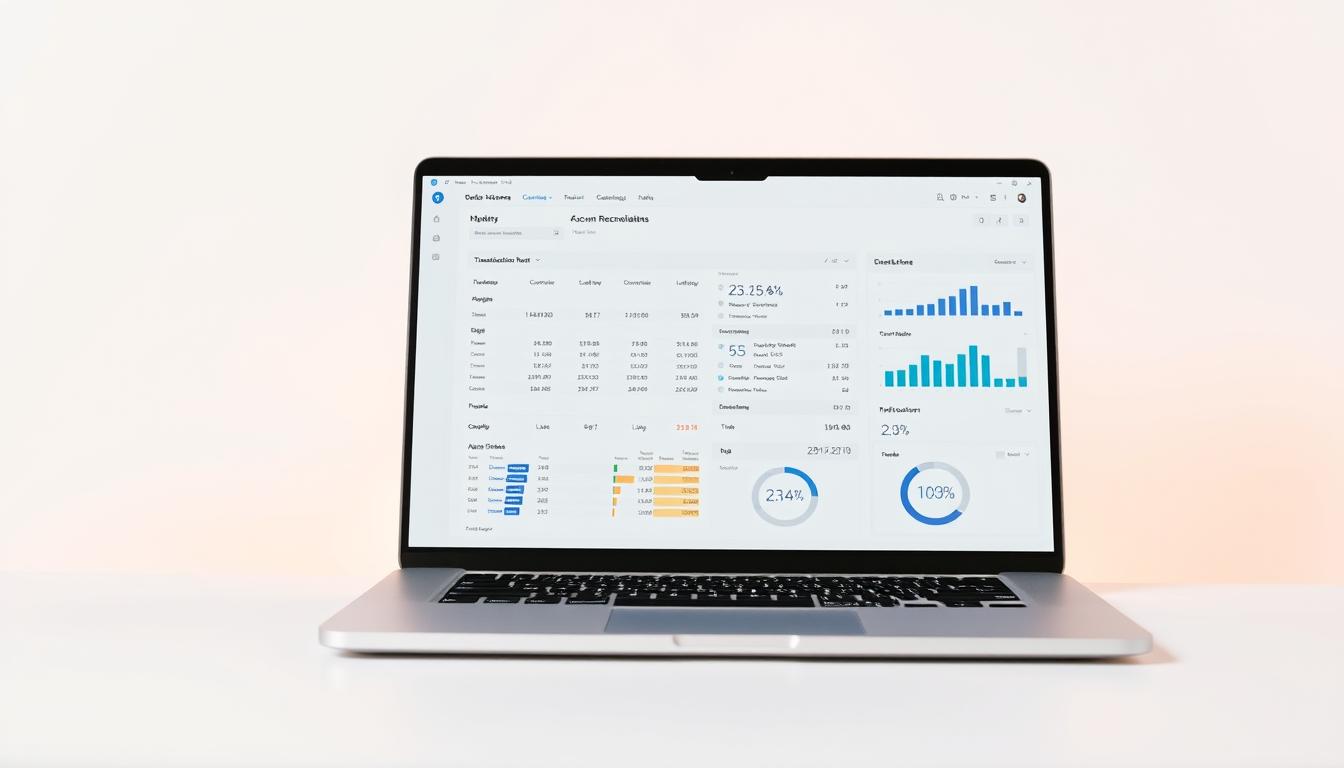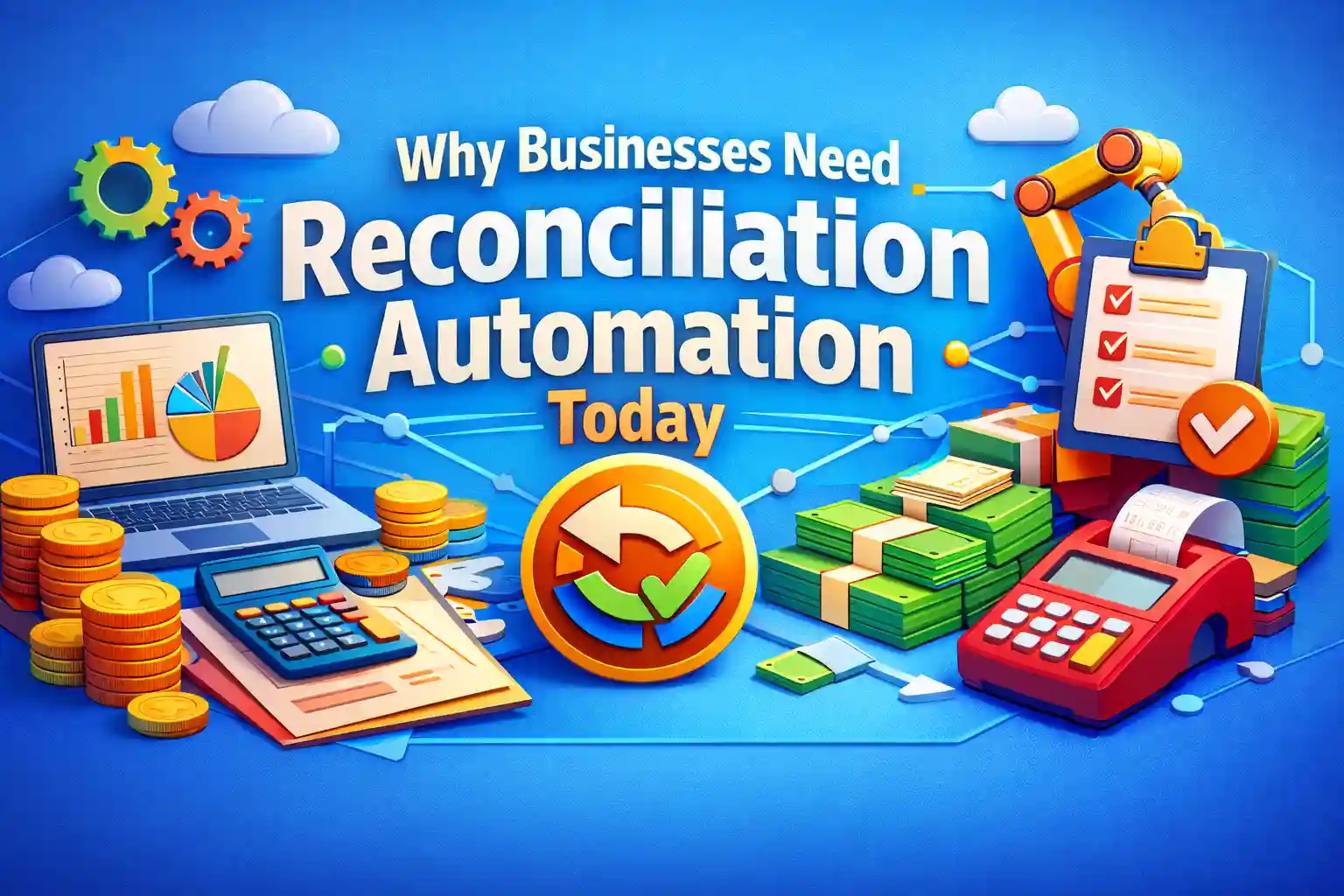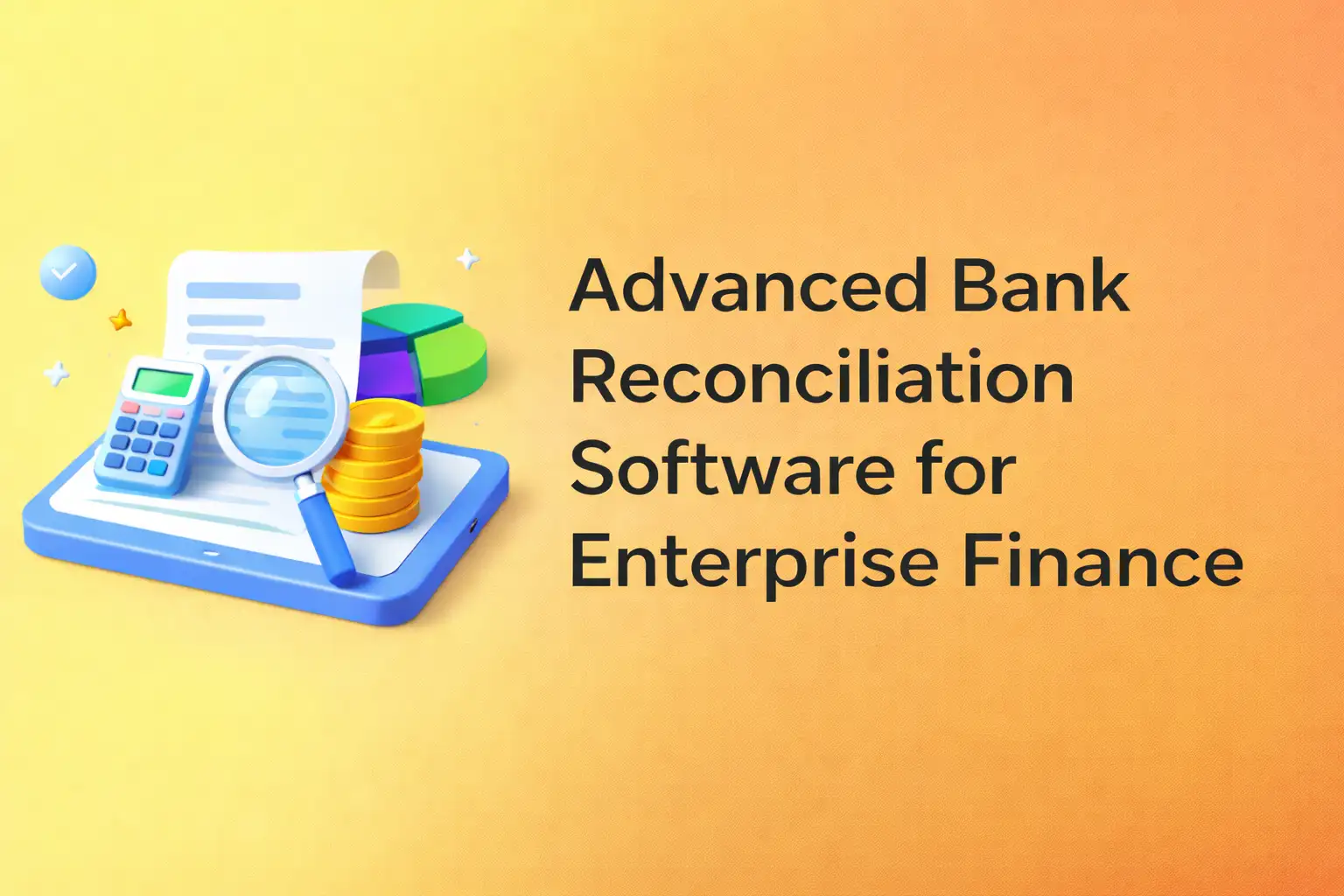Integrated Treasury Management Systems: The Backbone of Modern Finance Operations

Did you know companies with top treasury management systems cut costs by 20%? They also boost financial forecasting by 15%. As finance gets more complex, the role of integrated treasury systems grows. These systems are changing finance by managing money, risk, and transactions all in one place.
With treasury management software, companies can make their finances run smoother. They get better visibility and make smarter choices. Integrated systems are key to keeping finances stable and efficient today.
Key Takeaways
- Efficient treasury management is critical for financial stability.
- Advanced treasury management solutions can significantly reduce operational costs.
- Integrated systems improve financial forecasting accuracy.
- Treasury management software streamlines financial processes.
- Centralized platforms enhance visibility and decision-making.
What Is an Integrated Treasury Management System?
Financial management has become simpler with integrated treasury management systems. These systems offer a single platform for managing all financial operations of a company.
Definition and Core Functionality
An integrated treasury management system is software that helps manage financial resources well. It includes features like cash management, liquidity planning, risk management, and financial reporting.
The main parts of these systems are:
- Automated cash management, giving real-time views of cash and transactions.
- Liquidity planning and management, for better forecasting and decision-making.
- Risk management tools, to reduce financial risks through hedging and other strategies.
Historical Evolution of Treasury Technology
Treasury technology has changed a lot, from manual to advanced software. The history of treasury management shows a move towards automation and integration. This is because of the need for better efficiency and control.
Today, treasury management uses the latest technologies, like cloud-based platforms and artificial intelligence. These new tools are changing the treasury function. They help organizations be more financially agile and resilient.
The Strategic Role of Treasury Management in Corporate Finance
In today's complex financial world, treasury management is key. It supports financial decisions, improves cash flow, and reduces risks.
Financial Decision-Making Support
Treasury management solutions give real-time financial insights. This helps treasury pros make smart choices on investments and risk. Good treasury software analyzes data to boost financial performance.
Liquidity Management Enhancement
Liquidity management is vital for a company's funds. Treasury systems help with cash forecasting and planning. This keeps cash flow steady and avoids crises.
Risk Mitigation and Compliance
Risk management is a big part of treasury work. It involves managing financial risks. Treasury tools like hedging and scenario analysis help. These systems also ensure companies follow rules, avoiding fines.
Using treasury software helps companies make better financial choices. It improves cash flow and reduces risks. This strategic approach is key for staying competitive today.
Key Features of Modern Treasury Management Systems
Today's corporate finance is all about advanced treasury management systems. These systems make financial operations smoother, improve cash flow, and reduce risks. They use cutting-edge technology to do so.
Cash Management and Forecasting
Good cash management is key for any company's financial health. Modern systems help with this by automating cash management. They let businesses predict their cash needs, manage cash better, and make smart financial choices.
- Automated cash forecasting tools help in predicting future cash flows.
- Real-time cash positioning allows for better liquidity management.
- Integration with banking platforms facilitates streamlined cash management.
Liquidity Planning and Management
Liquidity planning is vital for treasury management. It ensures a company has enough money to pay its bills. Treasury systems offer tools for better liquidity planning and working capital management.
- Liquidity forecasting helps in identifying funding needs.
- Cash pooling and netting optimize fund use.
- Investment management tools maximize returns on extra funds.
Risk Management Tools
Risk management is a big part of treasury work. It involves spotting, assessing, and reducing financial risks. Modern systems have tools for managing risks like interest and foreign exchange risks.
- Hedging strategies can reduce loss risks.
- Real-time market risk monitoring helps manage risks better.
- Integrated tools help meet regulatory needs.
Reporting and Analytics Capabilities
Good reporting and analytics are key for making smart treasury decisions. These systems offer advanced tools for insights into cash, liquidity, and risks.
These tools help treasury pros analyze past data, spot trends, and forecast future finances. This supports strategic financial planning.
Benefits of Implementing an Integrated Treasury Management System
An integrated treasury management system changes how finance works. It makes processes smoother, gives better visibility, and cuts costs. It's made for today's finance needs, helping manage treasury tasks well.
Operational Efficiency Gains
This system boosts work efficiency by automating tasks, cutting down on mistakes, and making work faster. The main advantages are:
- Automated cash management and forecasting
- Streamlined payment processing
- Real-time visibility into cash positions
- Simplified bank reconciliation processes
Financial Visibility and Control
It also gives better financial insight and control, helping make smart choices. The benefits are:
- Real-time monitoring of cash flows
- Improved forecasting accuracy
- Enhanced risk management capabilities
- Centralized control over treasury operations
Cost Reduction Opportunities
Using this system can also save a lot of money. Savings come from:
- Reduced manual processing costs
- Lower banking fees through better cash management
- Minimized risk-related costs through better risk management
- Improved investment returns through better cash forecasting
Regulatory Compliance Advantages
It also helps with following rules, keeping businesses in line with changing laws. The benefits are:
- Automated compliance reporting
- Enhanced audit trails and transparency
- Improved risk management and mitigation
- Centralized management of regulatory requirements
By getting an integrated treasury management system, companies can work better, see their finances clearly, save money, and follow rules better. This all-around solution is key for today's finance, helping manage treasury and drive success.
Integration Capabilities with Existing Financial Ecosystems
Good treasury management needs to work well with ERP, accounting, and banking systems. Today's treasury systems are made to easily connect with these financial tools. This makes operations smoother and financial data clearer.
ERP and Accounting System Integration
Treasury software can link up with ERP and accounting systems. This makes sharing financial data easier and cuts down on manual work. It helps with:
- Automated data transfer between systems
- Enhanced financial reporting and analysis
- Improved cash forecasting and liquidity management
Banking Platform Connectivity
Connecting with banking platforms is key for treasury systems. It lets users:
- Directly access bank account info
- Start payments and transactions
- Keep track of cash in real-time
API Frameworks and Data Exchange Standards
APIs and data standards are essential for smooth connections between treasury systems and other financial tools. This includes:
- Support for standardized APIs
- Compliance with data exchange protocols
- Flexibility for customization and adaptation to different financial ecosystems
Using these integration features helps organizations run their finances better. It makes their treasury management more efficient.
Automated Cash Management Through Treasury Technology
In today's fast world, automated cash management is essential. Companies need to improve their financial operations. Treasury technology is key in this effort.
Cash Forecasting Automation
Treasury technology automates cash forecasting. It uses advanced algorithms and machine learning. This makes predicting cash flows more accurate.
Businesses can then make better decisions about their money and investments.
- Improved accuracy in cash flow predictions
- Enhanced ability to manage liquidity
- Better decision-making regarding investments
Streamlined Bank Reconciliation
Treasury technology also makes bank reconciliation easier. It cuts down the time and effort needed to match transactions. Automated tools quickly find and fix any issues, keeping financial records accurate.
Payment Processing Optimization
Optimizing payment processing is vital for cash management. Treasury technology helps manage payments better. This reduces costs and minimizes errors.
It allows for prioritizing payments, automating schedules, and improving security.
Working Capital Management
Managing working capital well is essential for a healthy cash position. Treasury technology offers tools for better working capital management. This includes cash pooling, netting, and supply chain financing.
By using treasury technology, companies can improve their cash management. This leads to better financial efficiency and lower costs.
Also Read: Best Integrated Treasury Management Systems for Small and Medium Businesses
How to Select the Best Treasury Management System
In today's complex financial world, picking the right treasury management system is key. It helps you stay ahead of the competition. You need to look at your organization's needs, evaluate important criteria, and think about the total cost.
Assessing Organizational Requirements
Before choosing a treasury management system, know what your organization needs. Look at your current financial processes and find out what's not working well. Decide which features are most important for your business.
- Evaluate your current cash management processes.
- Identify areas for improvement in financial visibility and control.
- Determine the level of automation required for your financial operations.
Key Evaluation Criteria
When looking at treasury management systems, focus on a few key areas. These include the system's functionality, how well it can grow with your business, its security, and how easy it is to use.
It's also important to see if the system can work with your current financial systems. Think about these points:
- The system's compatibility with your current ERP and accounting systems.
- The availability of APIs for custom integrations.
- The vendor's experience with similar implementations.
Vendor Selection Process
Choosing the right vendor for your treasury management system is a big deal. You should look at the vendor's reputation, what they offer, and their support services.
Here are some things to consider when picking a vendor:
- The vendor's experience in the treasury management space.
- The comprehensiveness of their product features.
- The quality of their customer support and training programs.
Total Cost of Ownership Analysis
It's important to understand the total cost of owning a treasury management system. This includes the initial cost, ongoing maintenance, and any extra costs for customizations.
To do a good total cost of ownership analysis, think about these:
- Initial implementation costs, including hardware and software expenses.
- Ongoing maintenance and support fees.
- Potential costs associated with customizing the system to meet your organization's needs.
Implementation Strategies and Best Practices
To get the most out of treasury management solutions, a solid plan is key. A good plan means understanding and tackling several important steps.
Project Planning and Governance
Starting off right means solid project planning and governance. You need to know what the project is about, when it will be done, and who's involved. This includes people from treasury, finance, and IT.
- Define project objectives and scope
- Establish a project timeline and milestones
- Identify and allocate necessary resources
- Set up a governance structure with clear roles and responsibilities
Data Migration and System Integration
Moving data and making systems work together are big parts of the job. It's important to make sure data moves smoothly and the system fits with what you already have.
- Assess data quality and completeness
- Develop a data migration plan and execute it
- Configure the system to integrate with ERP, accounting, and banking platforms
- Conduct thorough testing to ensure data integrity and system compatibility
User Training and Change Management
Teaching users and helping them adjust is vital. Good training and support help users see how the system can make their work better.
- Develop a training plan tailored to different user groups
- Provide ongoing support and resources
- Communicate the benefits of the new system to users
- Monitor user adoption and address any issues promptly
Post-Implementation Optimization
After it's all set up, keep working to make sure the system stays useful. Regular checks and tweaks help find and fix problems, and make the most of new features.
- Regularly review system performance and user feedback
- Identify opportunities for process improvements
- Stay updated with new features and best practices
- Continuously monitor and optimize system configurations
By sticking to these steps, you can make sure your treasury management system works well. This leads to better financial management and better business results.
Also Read: Choosing the Right Treasury Management Solution: Features and Benefits Explained
Emerging Trends in Treasury Management Solutions
The world of treasury management is changing fast with new technologies. Businesses face complex financial situations. They need the latest treasury management solutions to stay ahead.
AI and Machine Learning Applications
Artificial intelligence (AI) and machine learning (ML) are changing treasury management. They improve forecasting, automate tasks, and offer insights in real-time. This helps treasurers make better decisions and manage cash better.
- Predictive analytics for cash forecasting
- Automated reconciliation processes
- Enhanced risk management through pattern recognition
Blockchain and Distributed Ledger Technology
Blockchain is making treasury operations more transparent, secure, and efficient. It uses distributed ledger technology (DLT) for quick settlements, lowers risk, and simplifies trade finance.
- Real-time settlement and gross settlement
- Immutable transaction records
- Smart contracts for automated payment processes
Real-Time Treasury Operations
The move to real-time treasury operations is urgent. It's about making financial transactions happen instantly. This helps treasurers manage cash better, react to market changes quickly, and improve working capital.
Cloud-Based and SaaS Treasury Platforms
Cloud-based and SaaS treasury platforms are becoming more popular. They're scalable, flexible, and cost-effective. These solutions offer better security, less IT work, and easy integration with current financial systems.
As treasury management keeps evolving, using these new trends is key for businesses to compete. By using AI, blockchain, real-time operations, and cloud-based solutions, companies can improve their financial management. This helps them grow.
Conclusion: Future-Proofing Finance Operations with Advanced Treasury Systems
Advanced treasury systems are key for making finance operations strong and efficient. They offer a complete platform for managing money, reducing risks, and keeping liquidity high.
Using treasury management solutions helps companies make better financial choices. It boosts efficiency and cuts costs. Treasury management plays a big role in finance, helping with visibility, control, and following rules.
To keep finance operations ahead, adopting new treasury systems is vital. This means using AI, blockchain, and real-time operations. This way, companies can stay competitive.
In short, future-proofing finance operations means being proactive in treasury management. Investing in an integrated treasury management system prepares companies for today's finance challenges. It helps them succeed in the long run.
Also Read: Comparing Top Treasury Management Software: Which Is Best for You?
FAQs
How does treasury technology support financial decision-making?
Treasury technology supports financial decision-making by providing real-time data. It offers insights on cash flows, liquidity, and risk exposure. This helps finance professionals make informed decisions and manage risks.
What are the key features of modern treasury management systems?
Modern treasury management systems have key features like cash management and forecasting. They also include liquidity planning, risk management tools, and reporting capabilities. These features help manage finances efficiently.
How can treasury management systems integrate with existing financial ecosystems?
Treasury management systems integrate with existing financial ecosystems through ERP and accounting system integration. They also connect with banking platforms and use API frameworks for data exchange. This integration automates financial processes and enhances management.
What are the benefits of automating cash management through treasury technology?
Automating cash management through treasury technology improves forecasting accuracy and streamlines bank reconciliation. It optimizes payment processing and enhances working capital management. These benefits lead to financial efficiency and cost reduction.
How do I select the best treasury management system for my organization?
To select the best treasury management system, assess your organizational needs. Evaluate criteria like functionality and scalability. Conduct a thorough vendor selection process. Consider the total cost of ownership and return on investment.
What are the emerging trends in treasury management solutions?
Emerging trends include the use of AI and machine learning in treasury management. Blockchain and distributed ledger technology are also gaining traction. There's a shift towards real-time operations and cloud-based platforms. These trends will shape the future of treasury management.
How can I ensure a successful implementation of a treasury management system?
For a successful implementation, develop a detailed project plan and establish clear governance. Conduct thorough data migration and system integration. Provide user training and optimize the system post-implementation.
What is the role of treasury management in corporate finance?
Treasury management plays a strategic role in corporate finance. It supports financial decision-making, enhances liquidity management, and mitigates risks. It optimizes financial resources and improves visibility, contributing to corporate strategy and financial health.
Contact us now


.webp)







